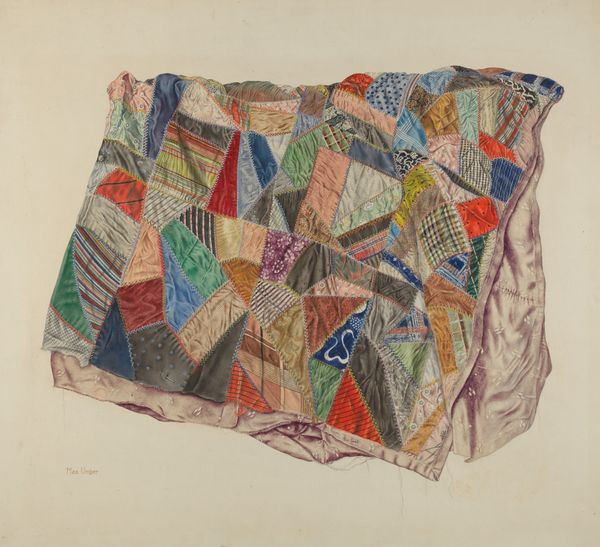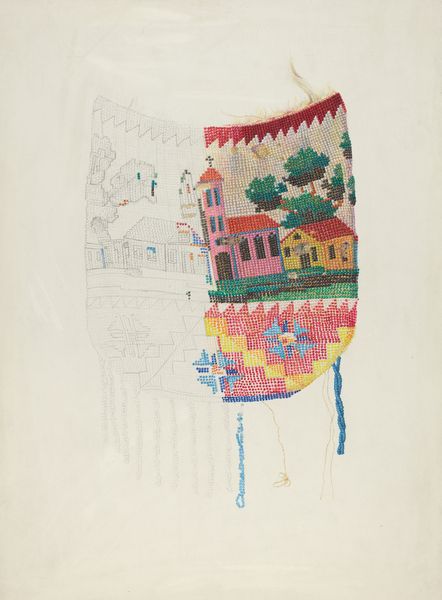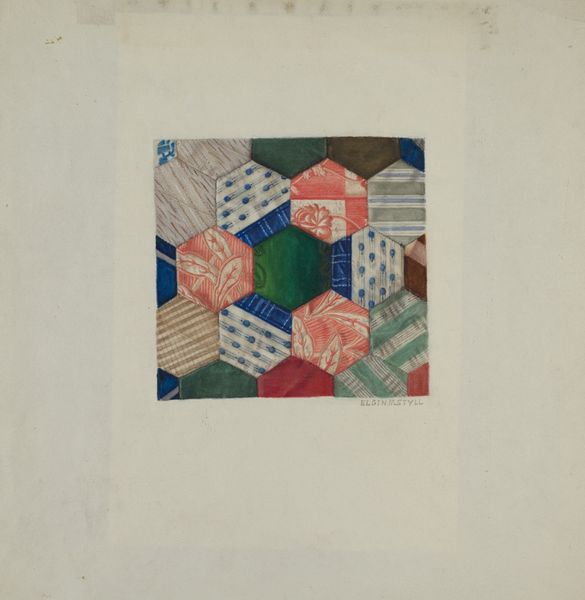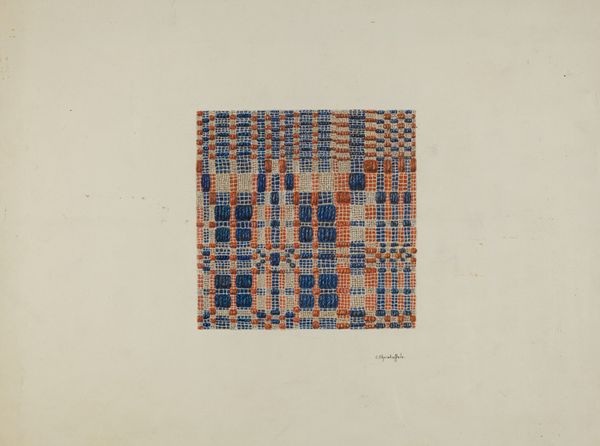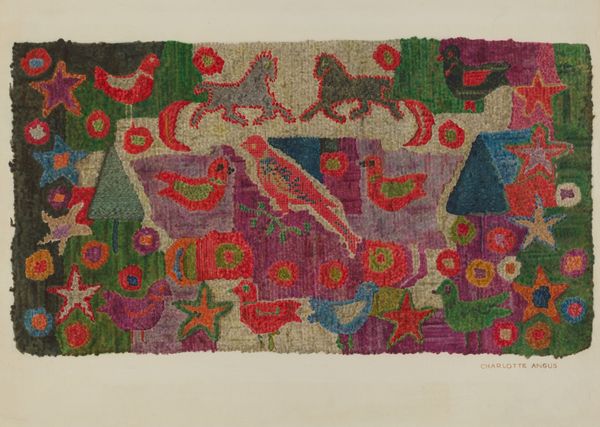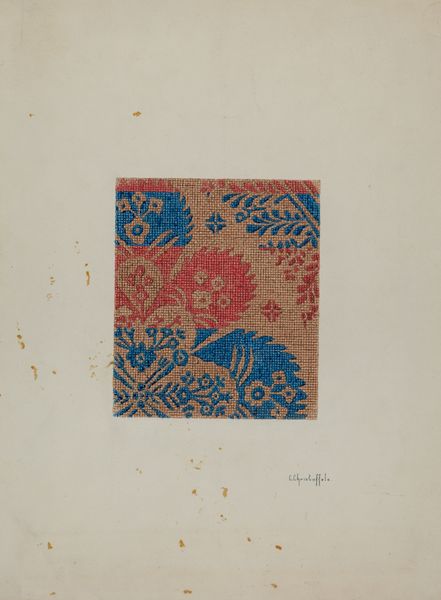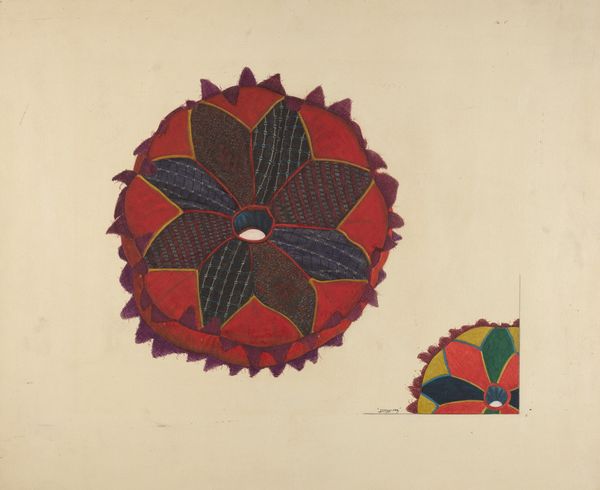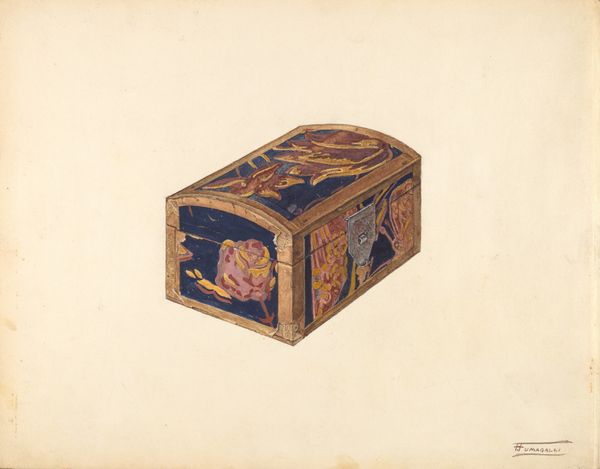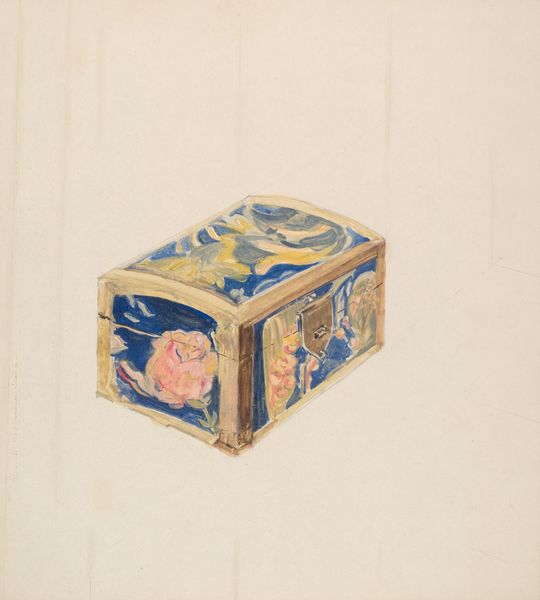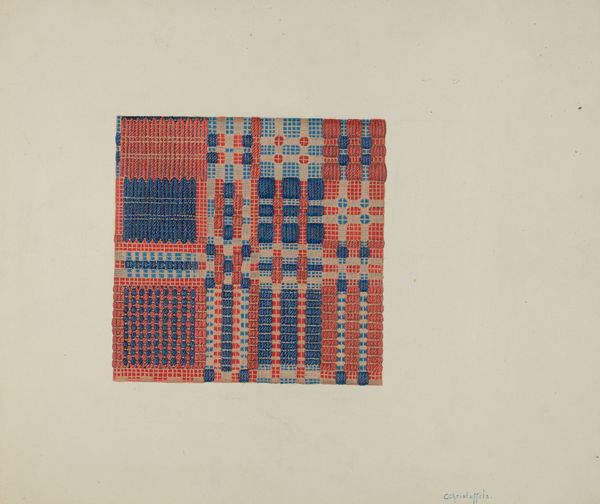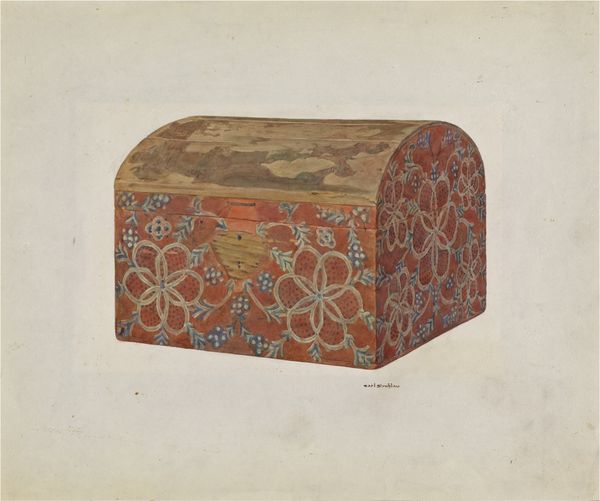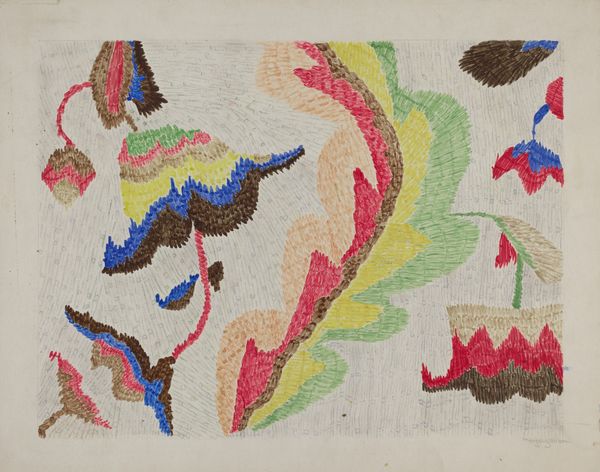
drawing, watercolor
#
drawing
#
watercolor
#
ceramic
#
watercolour illustration
#
cartoon style
#
decorative-art
#
watercolor
Dimensions: overall: 21.4 x 30 cm (8 7/16 x 11 13/16 in.) Original IAD Object: 4 1/4" high; 2 3/8" wide; 1 3/8" deep
Copyright: National Gallery of Art: CC0 1.0
William O. Fletcher created this study of a toy bank using watercolor, graphite, and possibly gouache. The words ‘Waste Not - Want Not’ speak to the Protestant work ethic and the rising importance of fiscal responsibility. The architectural form of the bank, with its simplified Gothic Revival arches, gives a sense of tradition and solidity, evoking the idea of a secure home and family. Notice how the slot for the coins reinforces this link with the domestic sphere. The geometric patterns decorating the bank suggest it may have been mass-produced, reflecting the growth of consumer culture during the late 19th and early 20th centuries in America. As an art historian, I’m drawn to the social context in which this image was made. How did institutions, such as the family home, schools, or even the church, teach thriftiness? Catalogues and trade publications from the period would tell us more about the commercial production of these objects. By looking into these sources, we can better understand how this humble toy bank reflects broader cultural values.
Comments
No comments
Be the first to comment and join the conversation on the ultimate creative platform.
